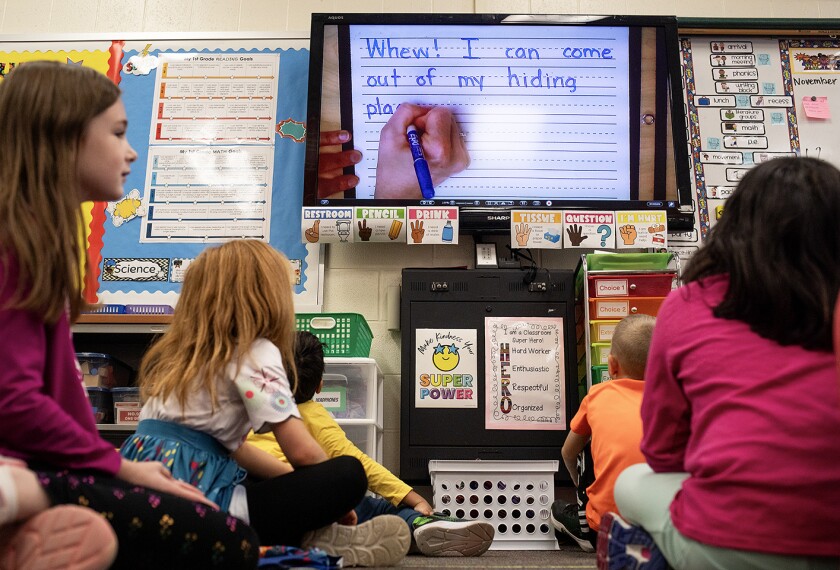If a student tells you they read a text—whether that’s a story featuring pajama-wearing llamas, a Shakespeare play, or a dystopian graphic novel—it is no longer a given that they held a physical book in their hands.
In fact, 30 percent of educators say their students spend at least 51 percent of their classroom reading time on a digital screen or device, according to a survey of 1,058 teachers, principals, and district leaders conducted by the EdWeek Research Center in January and February. And that percentage may well climb as devices become even more ubiquitous and print books scarcer.
But it’s important to remember that students get something from holding a paper book in their hands as they absorb a text, said Maryanne Wolfe, the director of the Center for Dyslexia, Diverse Learners, and Social Justice at the UCLA Graduate School of Education and Information Studies.
Physical books encourage “the development of deep reading processes,” including empathy and critical analysis, Wolfe said during an Education Week online forum this month.
On the other hand, while reading on a screen “what we actually tend to do is that we skim. We word spot. We browse. We scroll. And in that very act, even though it gives us more information, more quickly, it actually disadvantages the slower, deeper processing of language,” Wolfe said.
Devices like tablets and phones allow readers to navigate away from a text to check their social media, their email, or do a quick Google search. And that can distract from the act of reading, Wolfe said.
“The screen is very exciting, but in fact, it’s overexciting,” she said. Students who use it are “learning to be constantly distracted by novelty.”
To be sure, digital devices come with their own set of reading benefits. For instance, with digital readers, it’s a lot easier to offer students background information on a particular topic without intruding into the main text, Wolfe said. What’s more, it’s easier to adjust text features like font size to make a text more accessible for vision-impaired readers in a digital context.
“The digital medium has the ability to transform the texts in such a way that can be very happily used by different individuals,” Wolfe said.
And not all digital devices are created equal. For instance, an e-reader, like Amazon’s Kindle, is not as good as a physical book at encouraging deep reading, but research suggests it is a lot better than other kinds of devices. That’s because “you are restricting yourself from the 27 distractions per hour that our youth usually experience when they’re reading on their iPads or their laptops or their phones,” Wolfe said.





